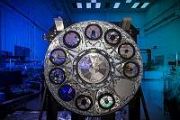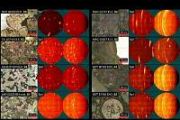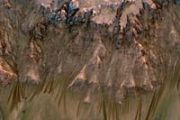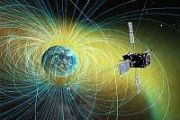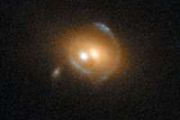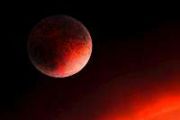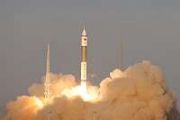
Copernical Team
The PI's Perspective: The Long Game
 New Horizons is healthy and speeding across the Kuiper Belt at a distance of over 5.5 billion miles from Earth!
The spacecraft is collecting round-the-clock data on our Sun's cocoon in the galaxy called the heliosphere, and transmitting that data as well as the final datasets from our flyby of Kuiper Belt object (KBO) Arrokoth, back to Earth.
The big news for New Horizons since I wro
New Horizons is healthy and speeding across the Kuiper Belt at a distance of over 5.5 billion miles from Earth!
The spacecraft is collecting round-the-clock data on our Sun's cocoon in the galaxy called the heliosphere, and transmitting that data as well as the final datasets from our flyby of Kuiper Belt object (KBO) Arrokoth, back to Earth.
The big news for New Horizons since I wro U.S. plans return to moon with an international astronaut by 2030
 The White House said Wednesday that the United States plans to land an international astronaut on the surface of the moon by 2030. Vice President Kamala Harris will announce the mission at Wednesday's Space Council meeting.
"The meeting will highlight the United States' extraordinary progress in broadening and deepening international space partnerships across a range of areas, including
The White House said Wednesday that the United States plans to land an international astronaut on the surface of the moon by 2030. Vice President Kamala Harris will announce the mission at Wednesday's Space Council meeting.
"The meeting will highlight the United States' extraordinary progress in broadening and deepening international space partnerships across a range of areas, including Sussex research takes us a step closer to sustaining human life on Mars
 Researchers at the University of Sussex have discovered the transformative potential of Martian nanomaterials, potentially opening the door to sustainable habitation on the red planet.
Using resources and techniques currently applied on the International Space Station and by NASA, Dr Conor Boland, a Lecturer in Materials Physics at the University of Sussex, led a research group that invest
Researchers at the University of Sussex have discovered the transformative potential of Martian nanomaterials, potentially opening the door to sustainable habitation on the red planet.
Using resources and techniques currently applied on the International Space Station and by NASA, Dr Conor Boland, a Lecturer in Materials Physics at the University of Sussex, led a research group that invest SpaceX and Intuitive Machines set revised launch window for IM-1 lunar mission
 Intuitive Machines, Inc. (Nasdaq: LUNR, LUNRW), in a recent announcement made in coordination with SpaceX, has set a new launch window for its much-anticipated IM-1 lunar mission. The mission, now targeting a multi-day window opening in mid-February 2024, has been rescheduled due to shifts in the SpaceX launch manifest, primarily caused by unfavorable weather conditions.
The IM-1 mission i
Intuitive Machines, Inc. (Nasdaq: LUNR, LUNRW), in a recent announcement made in coordination with SpaceX, has set a new launch window for its much-anticipated IM-1 lunar mission. The mission, now targeting a multi-day window opening in mid-February 2024, has been rescheduled due to shifts in the SpaceX launch manifest, primarily caused by unfavorable weather conditions.
The IM-1 mission i Recent volcanism on Mars reveals a planet more active than previously thought
 A vast, flat, "featureless" plain on Mars surprised researchers by revealing a much more tumultuous geologic past than expected, according to a study led by researchers at the University of Arizona. Enormous amounts of lava have erupted from numerous fissures as recently as one million years ago, blanketing an area almost as large as Alaska and interacting with water in and under the surface, re
A vast, flat, "featureless" plain on Mars surprised researchers by revealing a much more tumultuous geologic past than expected, according to a study led by researchers at the University of Arizona. Enormous amounts of lava have erupted from numerous fissures as recently as one million years ago, blanketing an area almost as large as Alaska and interacting with water in and under the surface, re Hera's wings of power
 The solar wings that will power ESA's Hera asteroid mission for planetary defence as it ventures out to meet the Dimorphos asteroid have been cleared for flight. As part of its current test campaign at ESA's ESTEC Test Centre in the Netherlands, the spacecraft commanded the deployment of the wings one at a time, as it will do in space directly after launch - known as a 'hot deployment'.
Th
The solar wings that will power ESA's Hera asteroid mission for planetary defence as it ventures out to meet the Dimorphos asteroid have been cleared for flight. As part of its current test campaign at ESA's ESTEC Test Centre in the Netherlands, the spacecraft commanded the deployment of the wings one at a time, as it will do in space directly after launch - known as a 'hot deployment'.
Th Rocker-Bogie Around the Marsmas Sea: Sols 4041-4042
 Earth planning date: Monday, December 18, 2023: On the 4040 sol of Marsmas my downlink gave to me, a faulted drive and a wheelie! That's right, folks, we're popping Christmas-sized wheelies this year, bigger than we've ever seen before! It's a little hard to tell from the Navcam perspective, but the cover photo above shows our right-middle wheel (bottom in image) completely off the ground in sus
Earth planning date: Monday, December 18, 2023: On the 4040 sol of Marsmas my downlink gave to me, a faulted drive and a wheelie! That's right, folks, we're popping Christmas-sized wheelies this year, bigger than we've ever seen before! It's a little hard to tell from the Navcam perspective, but the cover photo above shows our right-middle wheel (bottom in image) completely off the ground in sus Zhurong Rover Unveils Ancient Polygonal Terrain Under Mars' Utopia Planitia
 A team of researchers from the Institute of Geology and Geophysics of the Chinese Academy of Sciences (IGGCAS) has made a significant discovery using the Zhurong rover's ground-penetrating radar on Mars. Their study, conducted in the expansive Utopia Planitia region, reveals buried palaeo-polygonal terrain, suggesting that this area experienced considerable climatic variability in ancient Martia
A team of researchers from the Institute of Geology and Geophysics of the Chinese Academy of Sciences (IGGCAS) has made a significant discovery using the Zhurong rover's ground-penetrating radar on Mars. Their study, conducted in the expansive Utopia Planitia region, reveals buried palaeo-polygonal terrain, suggesting that this area experienced considerable climatic variability in ancient Martia Virgin Galactic sets January 2024 for 11th mission
 Virgin Galactic Holdings, Inc. (NYSE:SPCE) has officially announced the opening of its 'Galactic 06' flight window on January 26, 2024. This mission will mark the company's 11th spaceflight, following a year of remarkable achievements in human spaceflight, including six suborbital missions in just six months.
The upcoming 'Galactic 06' flight is set to continue Virgin Galactic's pioneering
Virgin Galactic Holdings, Inc. (NYSE:SPCE) has officially announced the opening of its 'Galactic 06' flight window on January 26, 2024. This mission will mark the company's 11th spaceflight, following a year of remarkable achievements in human spaceflight, including six suborbital missions in just six months.
The upcoming 'Galactic 06' flight is set to continue Virgin Galactic's pioneering NASA Outlines Future Strategy for Post-ISS Microgravity Research Labs in LEO
 In a recent development marking a significant shift in space research dynamics, NASA is actively developing a strategy for establishing the next generation of microgravity national labs in a commercial space station environment. This move comes in response to a directive from the National Space Council in September 2022, tasking NASA with crafting a plan for this new era in space research.
In a recent development marking a significant shift in space research dynamics, NASA is actively developing a strategy for establishing the next generation of microgravity national labs in a commercial space station environment. This move comes in response to a directive from the National Space Council in September 2022, tasking NASA with crafting a plan for this new era in space research. 
















